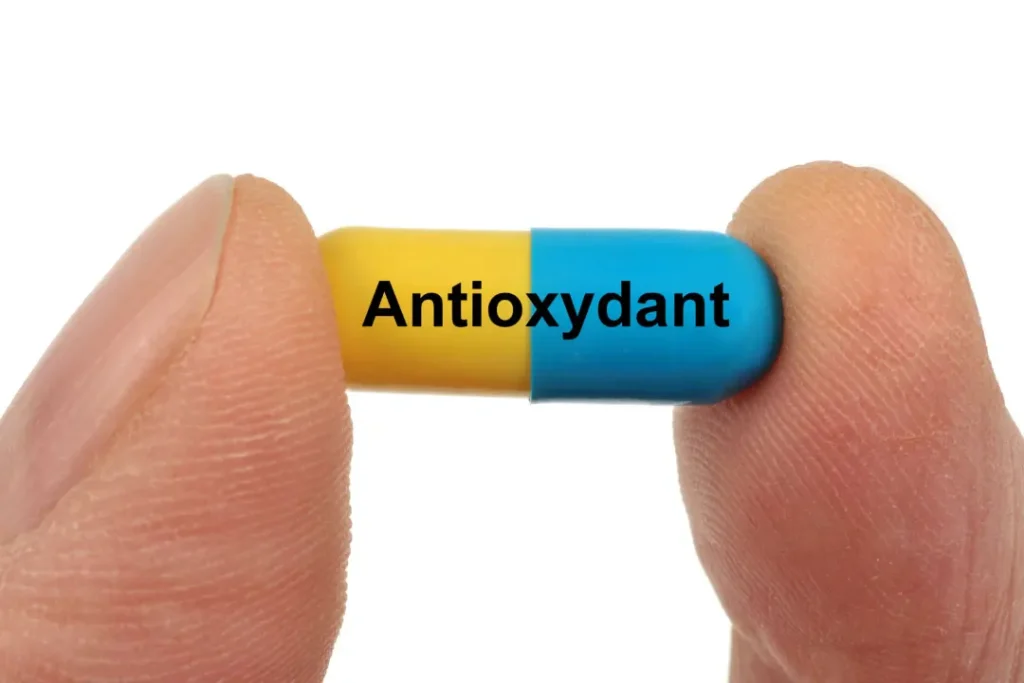The use and interest in contrayerva, a supplement made from the plant Dorstenia contrajerva, have increased. Despite its fascinating potential, there hasn’t been a thorough investigation of its composition, health advantages, ideal dose, side effects, potential interactions, and responsible usage. This review aims to close this gap by conducting an in-depth analysis of this new supplement.
You May Also Like:
Sunmed CBD vs. Partnered Process CBD: Finding the Best CBD for Sleep
What is Non Restorative Sleep? Here are 5 Great Ways to Get Quality Rest Every Night
Contrayerva: Benefits, Dosage, Side Effects, Drug Interactions, and Other Important Information is an original (NootropicsPlanet) article.
Nature of Contrayerva
The plant Dorstenia contrajerva, a native of Central and South America’s understory, is the source of contrayerva. This plant’s roots are typically gathered and made into a health supplement. Terpenoids, flavonoids, and coumarins are among the bioactive substances found in Contrayerva’s chemical makeup.
Dorstenin and contrajervin are two terpenoids discovered in Contrayerva, and they may have anti-inflammatory, antibacterial, and anticancer effects. Quercetin and kaempferol, two flavonoids found in contrayerva, have antioxidant properties. Coumarins have anti-inflammatory, antioxidant, and maybe neuroprotective effects. Examples include aesculetin and fraxetin.
Health Benefits of Contrayerva
Contrayerva has a wide range of possible health advantages due to the number of bioactive chemicals it contains. Its anti-inflammatory qualities, which come from both terpenoids and coumarins, may be able to treat conditions including arthritis, heart disease, and neurodegenerative disorders that are worse by inflammation.
The anti-oxidant properties of flavonoids can counteract damaging free radicals in the body, avoiding cellular damage, lowering the chance of developing chronic diseases, and promoting general health. These substances may also support healthy brain function, promote immunological response, and enhance vascular health.
The terpenoids in Contrayerva, notably dorstenin and contrajervin, may also have anticancer characteristics, according to recent study, albeit further studies are required to validate these results and comprehend their practical significance.

Chemistry of Contrayerva
The unique chemical composition of contrayerva, which comprises terpenoids, flavonoids, and coumarins, is principally responsible for its medicinal properties.
Organic substances called terpenoids, such as contrajervin and dorstenin, may have anti-inflammatory, antibacterial, and anticancer effects. They alter cellular signaling pathways, block inflammatory and tumor-promoting enzymes, and have antibacterial properties.
Quercetin and kaempferol are two examples of flavonoids, which are phenolic substances having strong antioxidant effects. They stop cellular oxidative damage by neutralizing damaging free radicals.
Coumarins, which are lactone substances and include aesculetin and fraxetin, have anti-inflammatory, antioxidant, and maybe neuroprotective properties. These substances have been associated with a decrease in neurodegeneration and inflammation and affect a number of signaling pathways.
Physiological Mechanisms of Action of Contrayerva
The physiological mechanisms of action of Contrayerva’s bioactive components are responsible for the positive impacts on health that are connected with it.
Effects of Antioxidants and Anti-Inflammatory Drugs
Contrayerva contains terpenoids and coumarins that have the ability to control several cellular pathways involved in inflammation. They could lessen systemic inflammation because they can prevent the synthesis of chemicals that cause inflammation, such as pro-inflammatory cytokines.
Due to their antioxidant capabilities, the flavonoids and coumarins can inhibit damaging free radicals, unstable chemicals that can destroy cells. By doing thus, these substances protect cells from harm brought on by inflammation as well as oxidative stress, a factor in many chronic illnesses.
Effects of Neuroprotection
The activity of Contrayerva’s coumarins is principally responsible for any putative neuroprotective benefits. These substances have the ability to shield neurons from oxidative damage and inflammation, two major factors in neurodegenerative disorders. Additionally, they alter synaptic plasticity and neuronal survival signaling pathways, both of which are essential for learning and memory formation.
Potential Cancer-Preventing Qualities
The terpenoids in contrayerva are primarily responsible for its alleged anticancer effects. These substances have the ability to cause apoptosis (programmed cell death), block angiogenesis (the growth of new blood arteries that might feed tumors), and possibly even stop the spreading of cancer cells. To comprehend their anticancer qualities completely and how to use them in the treatment of cancer, additional study is necessary.
In result, Contrayerva’s health advantages are a result of the physiological interactions between its bioactive ingredients. The prospective applications and advantages of Contrayerva will probably become even more clear as our understanding of these processes as a whole continues to advance.


Optimal Dosage of Contrayerva
The ideal Contrayerva dose might differ widely from person to person based on factors including age, health state, and the particular health problem being treated, as is the case with many supplements. At this time, the majority of clinical studies and anecdotal evidence point to a normal Contrayerva dose of about 1/2 cup infused daily. To find the best dose for their particular needs, users are strongly advised to speak with a healthcare professional.
Side Effects of Contrayerva
Contrayerva is often thought to be safe, but like with any supplement, any adverse effects should be taken into consideration. Mild headaches, lethargy, and gastrointestinal discomfort have been reported by a few users. Although uncommon, more severe allergy responses have also been recorded. In these cases, touching the plant can result in increased sensitivity to sunlight, which can lead to a higher liklihood of being sunburned.
Additionally, excessive Contrayerva use carries the risk of “antioxidant stress,” a condition that develops when antioxidant levels surpass the body’s capacity to control them and can cause potentially hazardous alterations in cellular function.


Potential Substance Interactions with Contrayerva
Contrayerva may interact with some drugs because of its biological composition. The terpenoids in Contrayerva may disrupt the activity of liver enzymes, which may affect how different medications you may be taking are metabolized. If you are taking medicine for cancer, diabetes, or heart disease, you may be impacted by this to a greater extent.
Additionally, Contrayerva’s antioxidant qualities may interfere with chemotherapy medications and lessen their efficiency. Therefore, before beginning a Contrayerva regimen, those who are receiving cancer therapy should use caution and talk to their doctor.
Responsible Use of Contrayerva
Contrayerva’s rising ubiquity necessitates the requirement for its appropriate usage. The key to obtaining its health advantages while preventing any adverse effects is regular monitoring of its use and careful adherence to approved levels. Before beginning Contrayerva supplementation, you should seek guidance from a healthcare professional if you have any known allergies or sensitivities. Additionally, if you are an expectant mother, are breastfeeding, or have any chronic conditions, you should talk to your doctor before beginning supplementation.
In a nutshell Contrayerva offers a unique combination of healthy substances, each of which helps to further the claimed general health advantages of this supplement. The usage of this supplement, like that of any other supplement, should be guided by knowledge of any possible interactions and negative effects. We may anticipate a greater understanding of this supplement’s function in human health when additional study into it is conducted.


Contrayerva:
Conclusion
While we’ve shed some light on the multitude of possible health benefits we can extract from Contrayerva, what truly tantalizes the scientific community is the unknown—the untapped potential and complexities that await further research.
It serves as a cautionary tale as well: the surge in interest can lead to irresponsible usage if not properly managed, which is why it’s paramount that you enter any exploration with a new supplement with trepidation and caution.
So, if you are ponder adding Contrayerva to your daily regimen, weigh the possible benefits with the likelihood of any drawbacks. With the proper guidance, your health may be made better with a touch of Contrayerva in the mix. Good luck!
References:
- CONTRAYERVA. Retrieved From: https://www.rxlist.com/contrayerva/supplements.htm
- African Herbal Remedies with Antioxidant Activity: A Potential Resource Base for Wound Treatment. Retrieved From: https://www.ncbi.nlm.nih.gov/pmc/articles/PMC6282146/
- Contrayerva. Retrieved From:https://rain-tree.com/carapia.htm
Important Note: The information contained in this article is for general informational purposes only, and should not be construed as health or medical advice, nor is it intended to diagnose, prevent, treat, or cure any disease or health condition. Before embarking on any diet, fitness regimen, or program of nutritional supplementation, it is advisable to consult your healthcare professional in order to determine its safety and probable efficacy in terms of your individual state of health.
Regarding Nutritional Supplements Or Other Non-Prescription Health Products: If any nutritional supplements or other non-prescription health products are mentioned in the foregoing article, any claims or statements made about them have not been evaluated by the U.S. Food and Drug Administration, and such nutritional supplements or other health products are not intended to diagnose, treat, cure, or prevent any disease.
